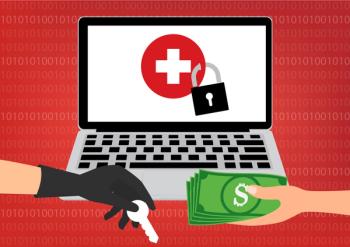
Voluntary guidelines passed in January show a way to making interoperability work on a practical level.


Voluntary guidelines passed in January show a way to making interoperability work on a practical level.

A vast majority said they plan to continue using telemedicine even beyond the pandemic, according to a report from Doximity.

There have been an alarming increase of ransomware attacks on healthcare systems in 2021—with more than 65 reported ransomware attacks on healthcare organizations in the third quarter alone and two-thirds of organization reporting that they had been targeted by ransomware strikes—a trend that is likely to continue in 2022.

Adoption of digital health technologies came fast and furious in the pandemic, but now it’s up to insurers and patients to figure out the best recipe for a mix of remote and in-person care.

For many people, telehealth is an inviting option. But some insurers are offering health plans that make it the main way by which people receive primary care.

Briana Contreras, editor of Managed healthcare Executive, spoke with Dr. Ian Tong, chief medical officer of Included Health in today’s episode. The two discussed telehealth use vs. in person care, and more specifically, the racial and ethnic differences in this use of care. They concluded the conversation with how telehealth use has continued to expose more benefits for all patients and for the industry through examples like improvements in reimbursement policies and in addressing health equity issues.

As industries across the board move towards a digital-only world, pharma companies must account for the different technologies that are transforming the R&D process.

In this week’s episode Briana Contreras, associate editor of Managed Healthcare Executive, met with Greg Miller, vice president of Industry Strategy, Healthcare and Life Sciences at Talkdesk. The two discussed that while virtual care has become a convenient tool in healthcare during the pandemic and has helped treat more patients, this form of care isn’t completely solving patient’s underlying issues. However, Miller shared how AI is helping ease the patient experience and improving care in this conversation.

If payers have timely access to accurate network data, they can manage costs, improve engagement with providers and help members make healthcare choices.

In this week’s episode, Managed Healthcare Executive Associate Editor Briana Contreras had the pleasure of meeting CEO of Quanterix and founder of Powering Precision Health, Kevin Hrusovsky. Quanterix is a blood-based biomarker analysis company. In this discussion, the two discussed Powering Precision Health and some tools like the Disruptive Innovation 5-step model that brings his vision closer of detecting and improving the health of patients sooner.

Artificial intelligence technology has reached the point where even early adopters are asking what its limits should be.

Many healthcare organizations are learning that creating an effective, scalable remote monitoring program is not easy. Most engage only about half of eligible patients. When patients do engage, providers struggle to keep them connected, find actionable insights in the data, and achieve optimal reimbursement.

While there was a noticeable surge in telehealth usage during the global pandemic, broadband coverage has only increased by about 10%.

Artificial intelligence is improving healthcare methods and insights. But when used incorrectly, AI is rife with pitfalls.

This opinion piece contributed by Draper voices today's digital platforms can help eliminate the administrative burden on nurses.

Mobile devices for patients to report symptoms associated with immune checkpoint inhibitors address an unmet need.

The resulting spike in telehealth use exceeded expectations, with an 11,718% increase in remote Medicare visits between March and April 2020.


The first half of 2021 saw 372 deals averaging $39.6 million, which is already more than the total value of the deals done in all of 2020.

Three differentiators that separate leaders from chasers in virtual health transformation.

Artificial intelligence can help deal with everyday problems such as prior authorization and high utilization. But payers are also eyeing it for loftier purposes.

Managed Healthcare Executive had a conversation with Kelly Chillingworth, RPh, director of business development at RxBenefits this week about the unique connection between pharmacy and telemedicine, what impact telemedicine & its pharmacy costs have on self-funded employers and how the right virtual care services a health provider offers to their members can be essential to building a competitive benefit.

By enabling a more efficient, integrated process, electronic payment solutions are optimizing payment processes for payers and providers at a time when reliable, accurate and timely payments are of utmost importance to healthcare organizations.

Insurers make acquisitions as pandemic adoption of virtual care delivery becomes the norm.

To say that Covid-19 has permanently transformed the meetings and events landscape would be stating the obvious, authors share in this opinion piece.